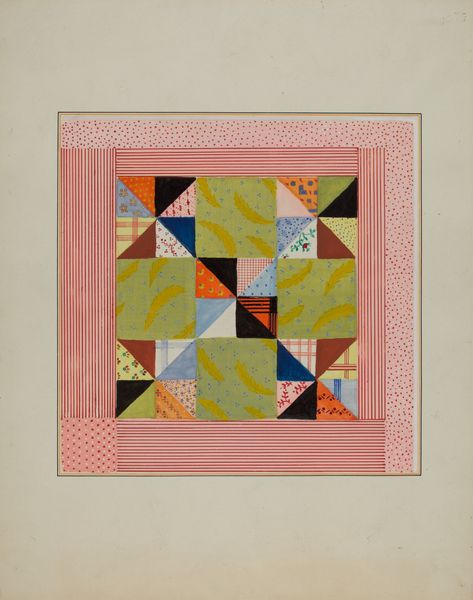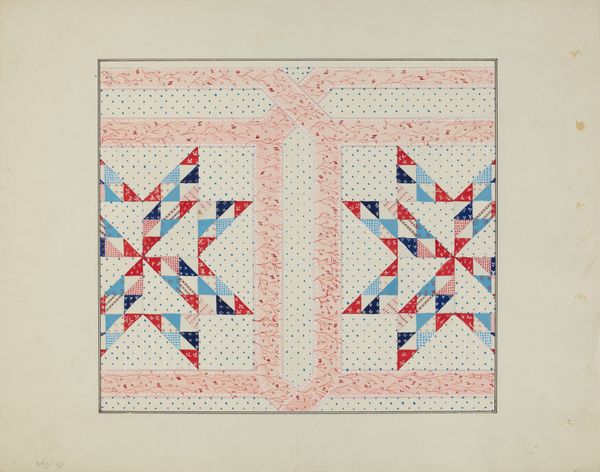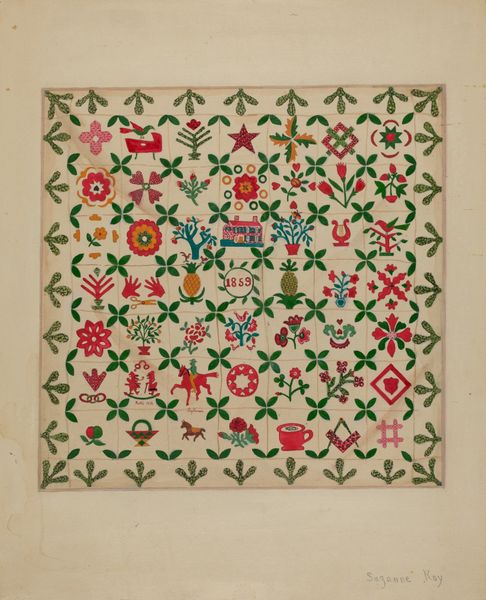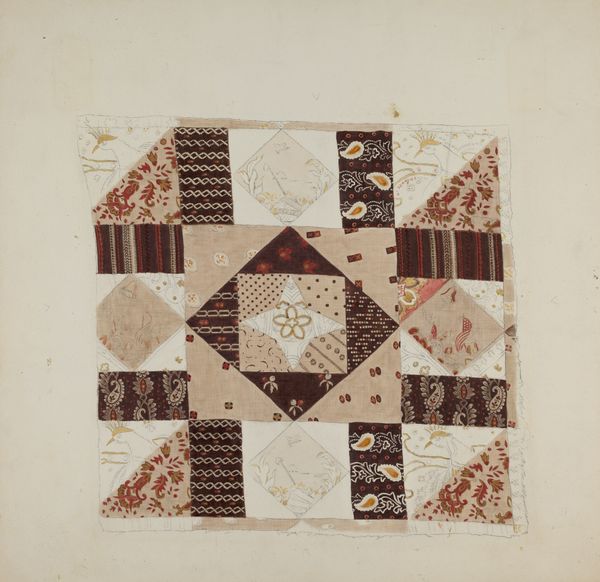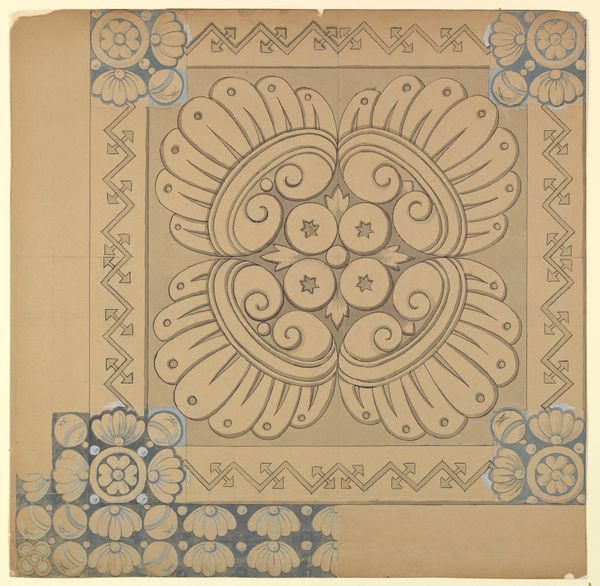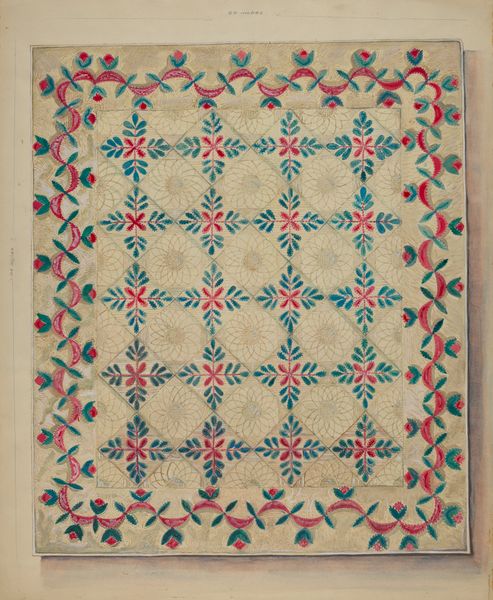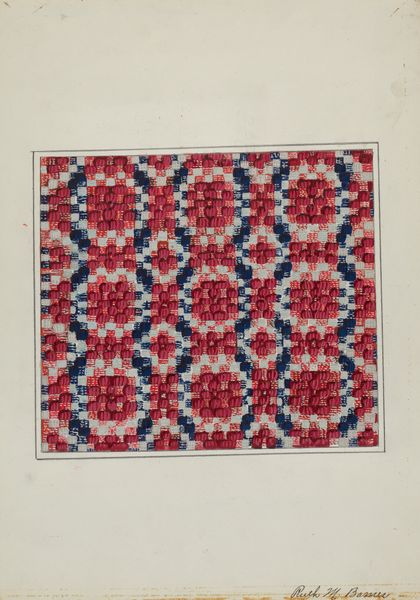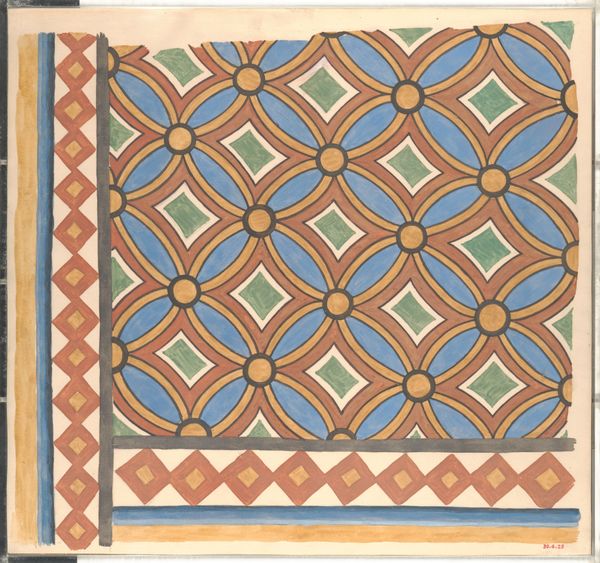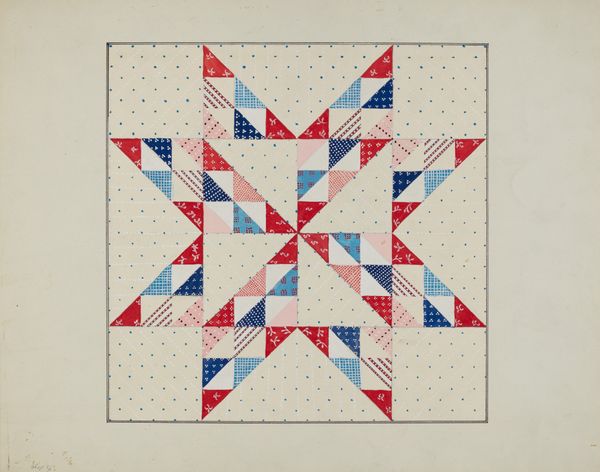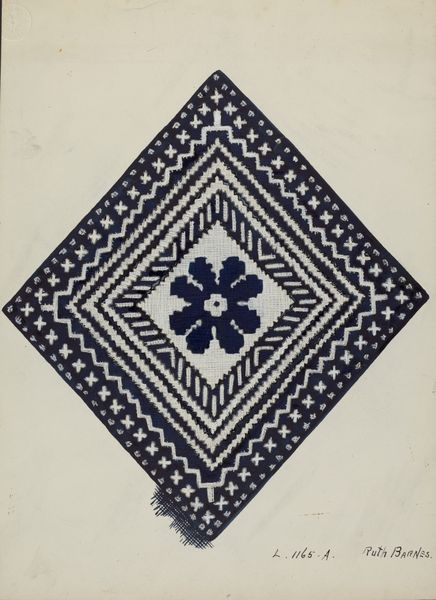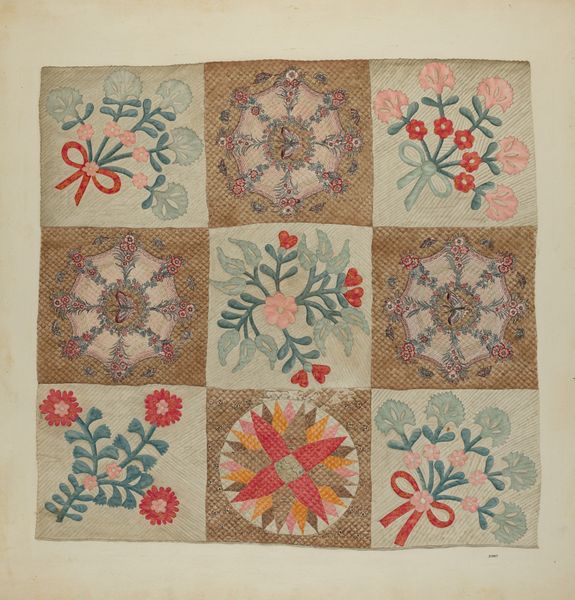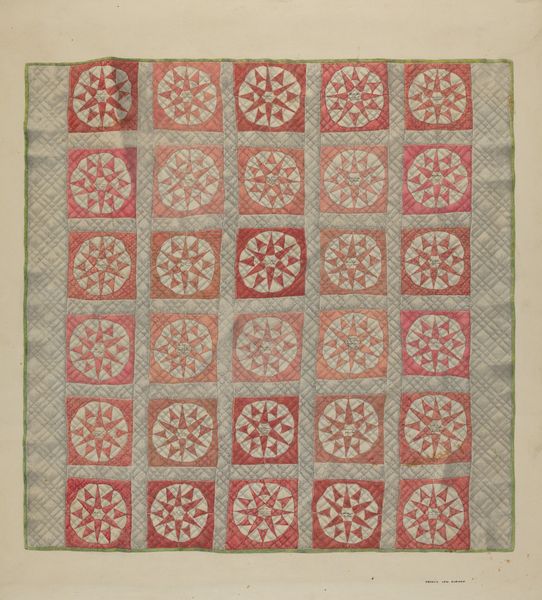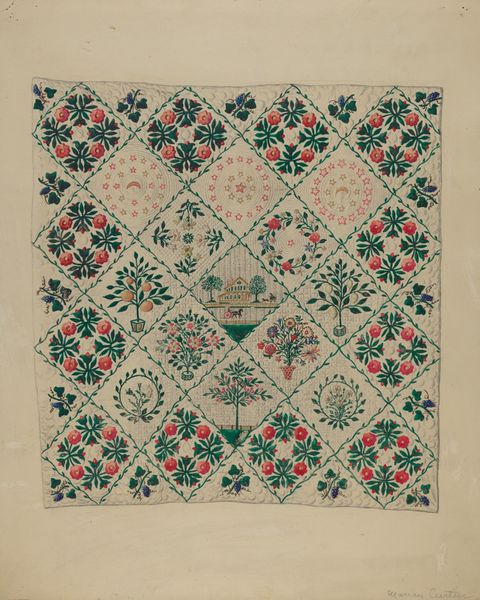
drawing, paper, watercolor
#
drawing
#
folk-art
#
water colours
#
ink paper printed
#
paper
#
watercolor
#
folk-art
#
geometric
#
watercolor
Dimensions: overall: 44.4 x 37.8 cm (17 1/2 x 14 7/8 in.)
Copyright: National Gallery of Art: CC0 1.0
Curator: At first glance, I see a watercolor depiction of a "Patchwork Quilt," likely created between 1935 and 1942. It's attributed to George Loughridge, and it is presented as a drawing rendered on paper. Editor: It’s fascinating. I'm immediately struck by the repetition, but it isn’t monotonous. The green bursts of stars are vibrant against the subtle background. It gives a sense of comfort. Curator: These kinds of quilt patterns had specific roles within the domestic sphere. They represented the labor of women. These quilts became objects to bestow upon loved ones. The very act of creating the quilt functioned as an expression of communal ties and family values, you see? Editor: Absolutely, it's packed with visual language. Green, of course, suggests growth and prosperity, and those star-like patterns, radiating outwards, remind me of resilience, perhaps reflecting the strength required during that era. Do you agree? Curator: Very astute. Quilt making in America served also to generate and solidify social and political groups: as meeting places where shared knowledge or news could be exchanged, and as vehicles for articulating concerns or expressing political allegiance. The symbolism here becomes increasingly multifaceted when viewed from this vantage point. Editor: Consider the shapes, too! The geometric nature, all the squares and triangles that make it up, feel like individual pieces coming together to form something larger and cohesive, something stronger than its parts. Curator: Loughridge has used watercolor here to document folk-art, in the mode of realism, during times of intense socioeconomic hardship in the USA. The rendering speaks to cultural endurance amidst great precarity. Editor: It's remarkable how an image of something as domestic as a quilt can resonate with broader meanings, isn't it? The visual echo continues to amplify the emotional, almost spiritual weight within such objects of use and folk artistry. Curator: Indeed, it’s through these intersections of artistry and function that we perceive a society’s self-regard. George Loughridge’s watercolor shows one manifestation of just such vision. Editor: It’s one thread of many. From these historical tapestries of labor and communal symbolism, we weave onward.
Comments
No comments
Be the first to comment and join the conversation on the ultimate creative platform.
